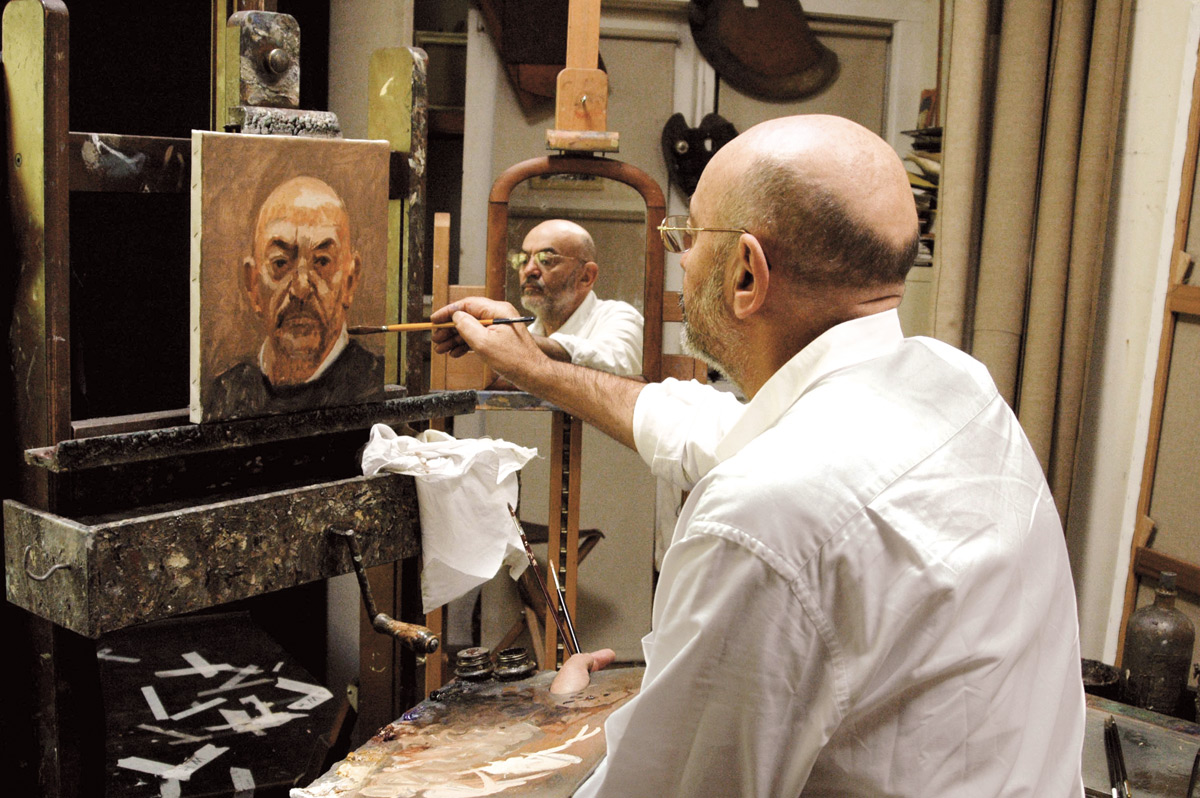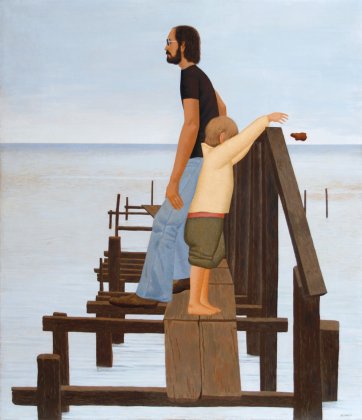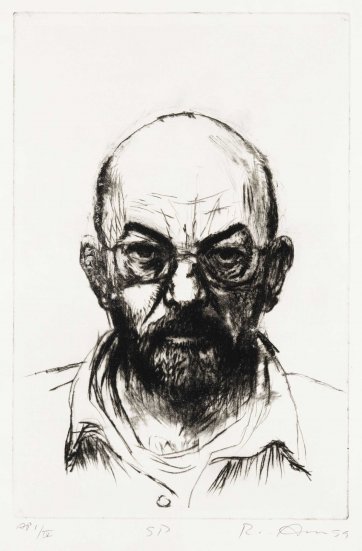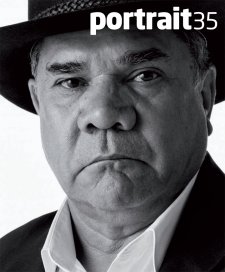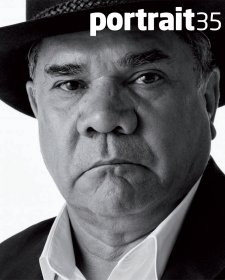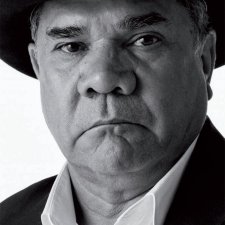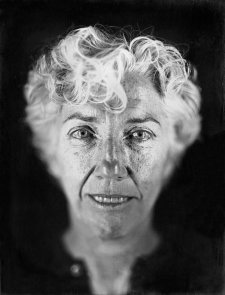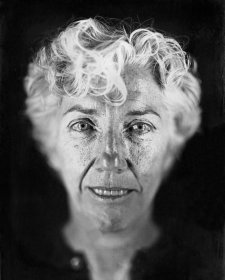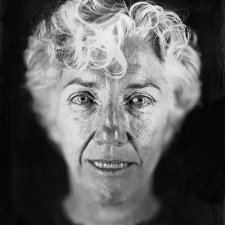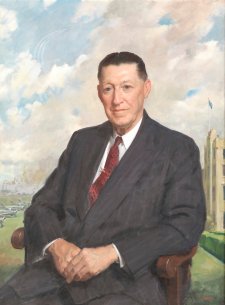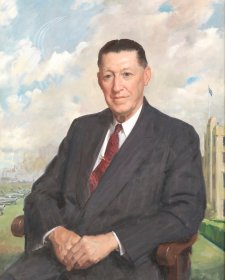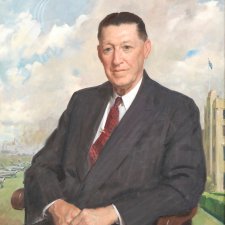Most artists will attempt a self portrait at some time in their career. Many will produce more than one, but only a very few, like Rick Amor, will make the genre a central core to their art. He stands alongside Albert Tucker as perhaps the most compulsive self portraitist this country has produced.
Unlike Tucker, who Amor acknowledges as an early influence in his student days, Amor uses the self portrait as an acknowledgement that nothing stays fixed in time, that there is an inevitable decline and fall which faces us all, that the painting is a reflection, not a defence against the ageing process.
Best known for his dark and brooding land, shoreline and cityscapes, Amor has also painted formal commissioned portraits as part of a rigorous commitment to his role as the complete professional artist. His commissioned portraits, some of which hang in the National Portrait Gallery collection, share the intense searching quality of his moody landscapes. But Amor reserves for his self portraits the full intensity of his unforgiving gaze. He invariably includes one self portrait in each exhibition as a marker of the times, a telling document to both his outward appearance and inner feelings. They can be commanding works which define an exhibition, like the great black painting which guards the entrance to this survey show. But it might as easily be a small etching, or perhaps a dark smudged drawing that betrays the struggle of weeks and months of intense studio work.
When pressed as to why he returns so often to his own face in the studio mirror, Amor will invariably advance a simple, seemingly disingenuous retort. ‘The artist paints self portraits because the model is always there – and free’. But such answers hide a deeper meaning, questioning, honest and uncompromising. His landscape and subject paintings are created for a market which has come to relish his dark view of the world, his places of mystery and meaning in which he tempts us to flirt with danger. Each self portrait, whether kept at home for decades, rarely seen and privately held or sold quickly to a willing collector, is a marker in the ongoing narrative of the artist’s life.
Amor’s first ‘real painting’ was a remarkable self portrait done at the age of fourteen. He is tentative and uncertain, the nervous youth trying the paints presented by his father after his mother’s death eighteen months earlier. From that moment on he would return again and again to the reassurance and intense inquisition of the face in the mirror. Every stage of Amor’s life, the troubles, tensions and self doubt are penetratingly put to canvas, with no feeling too deep or upsetting that it cannot be portrayed. When the feeling became too raw he would retreat into allegory, like the depiction of his son Lliam and himself on a shaky pier in Port Phillip Bay, the little boy playing, blissfully ignorant of the domestic turmoil which sees his father gazing in the opposite direction, lost in thought and the abyss of an imploding marriage. Twenty-five years on he has been aged prematurely by the rigours of chemotherapy and a bone marrow transplant in his battle against leukaemia. He traces every nuance of pallid skin, drug-bloated jowls and newly bald scalp. At other times the pain is self inflicted and, drunk and depressed, he ensures that no scar is left unrecorded, no scab unpicked. But the master artist is always present, confident that a knowing group of followers will forgive the follies so brutally portrayed, assured that he has his life, like his art, under firm control.
This exhibition brings together, for the first time, Amor’s opus of self discovery as a painter, draughtsman and printmaker. From his earliest teenage efforts to works of the present day, it showcases the intensity and often brutal honesty of Amor’s journey through the best and worst of times.
